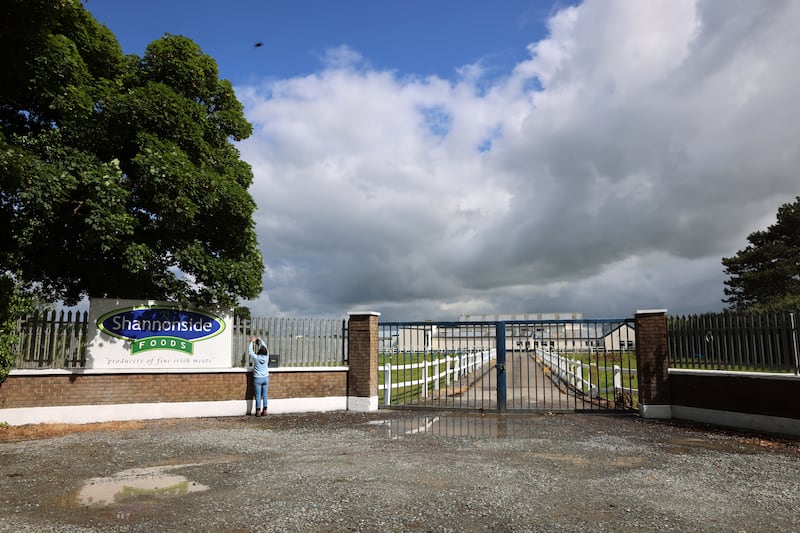When it comes to animal welfare stories, within racing you quite often hear private grumbling about how maudlin the coverage can be; basically, suggestions of hypocrisy because horses are good looking and other creatures aren’t. No one gets teary-eyed over pigs.
It’s a rough-hewn outlook that is perhaps the consequence of a working life in agriculture. There is certainly a danger of anthropomorphism sometimes. But it ignores how popular opinion, sentimental as it might seem, does tend to decide for itself what it’s appalled by.
Only the most rough and ready couldn’t be dismayed by recent reports and images of the 20 horses, including seven Irish thoroughbreds, found by port officials being illegally smuggled out of Dover in December.
There is an ongoing investigation into the transportation of the animals, which originated in Ireland, and how they were suspected of being moved out of Britain for fattening and slaughter on the Continent.
Slimming Cheltenham back to three days required to inject some momentum into flagging festival
Ryan Moore on duty for Aidan O’Brien at the Curragh as 2025 Irish flat season starts on Sunday
Another big day for Willie Mullins at Cheltenham despite Galopin Des Champs defeat
Cheltenham 2025 day four: Inothewayurthinkin wins Gold Cup – As it happened
A spokesperson for the World Horse Welfare charity said the animals were found in “horrific conditions”. Five of the seven thoroughbreds had to be euthanised. WHW said it is caring for eight surviving horses, including foals and a mare in foal.
WHW said many of the horses were too sick and weak to travel and were crammed into an unsuitable lorry. A number had strangles, a contagious bacterial infection, while two had pneumonia. One foal was on the floor of the truck and unable to get back on its feet.
Only the most hard-bitten can shrug their shoulders at such cruelty. But from a racing point of view, it is just the latest sorry example of what can happen to thoroughbreds that have apparently outlived their usefulness and wind up slipping through the cracks.
Horse Racing Ireland (HRI) has established the names of four of the seven thoroughbreds on the truck.
They include Superdermo, which ran seven times over hurdles before switching to the point-to-points fields and last ran in November. Another, The Expert, last ran in December. Named too are Dylan’s Diamond and Into The Lane. HRI understands both were euthanised. So were an unnamed six-year-old by Conduit and a five-year-old by Mahler. An unnamed five-year-old by Conduit was also on the lorry. HRI doesn’t have the name of a fifth animal subsequently put down at a holding farm.
Irish racing’s ruling body says it continues to co-operate on the matter with the British Horseracing Authority.
Unfortunately, HRI policy on the broader thorny issue of what to do with racehorses once their usefulness is over continues to look little more than asking racehorse owners to do the right thing by their property. Dover shows once again how such a policy comes up woefully short.
The damage inflicted on the sport by a minority who opt not to do the right thing underlines how there oughtn’t be any choice in the matter. Racing and breeding as an industry cannot afford the reputational toll that comes with not having systems in place able to live up to public scrutiny.
Talk of racing’s social contract or licence is another topic to get tough guys rolling their eyes.
The idea that an animal sport only gets to operate through popular acceptance that cruelty isn’t involved is an imprecise concept. Maybe when concentrating on the bottom line it can seem little more than jargon. Only when it’s gone does it start to get very real indeed.
At a time when most people’s familiarity with daily agricultural reality is negligible, images of scared helpless horses crammed on to a truck heading for slaughter are guaranteed to cause revulsion because they speak for themselves.
Putting horses down is a valid option once all other avenues have been explored. The recommended way is to have it done professionally in familiar surroundings with a minimum of stress on the animal. The carcass can then be disposed of properly. The cost is about €500.
That shouldn’t be a huge cost for anyone able to own a racehorse in the first place. But as last summer’s RTÉ Investigates programme showed, and the controversy surrounding the Shannonside abattoir, presuming that people will pony up is presuming way too much.

Now that the country’s sole abattoir for horses is no longer operating, it’s hard not to think the unscrupulous will be even more inclined to opt for a cheaper option and at increasing cost to racing’s popular stature.
There’s a day of reckoning coming about the need to face up to what happens to animals essentially bred for entertainment purposes after their racing usefulness is over. The sport’s sustainability is tied up in finding a systemic answer that reassures wider public opinion.
It will be a notably limp response if all that can be pointed to are token exercises motivated by a desire to not interfere with ownership rates. Ultimately, for the want of 500 quid to do the right thing an awful lot more risks being lost.
Something for the Weekend
Emmet Mullins’ reputation for the unconventional is well established and is added to somewhat by CORBETTS CROSS (3.37) lining up in Ascot’s Grade One chase tomorrow. It’s an unorthodox prep’ for a Gold Cup hopeful from Ireland although if “Blue Riband”hopes are realistic, a good performance is required.
Mullins reports he feels the horse is coming to the boil at the right time and he still looks progressive enough to overcome last year’s one-two, Pic D’orhy and L’Homme Presse.
Twice BOTOX HAS (2.40) has run over three miles at Haydock and won both times, including last year’s Rendlesham Hurdle. Course and distance form is always a plus, but even more so might be signs of a resurgence in form this week from the Gary Moore yard.
















